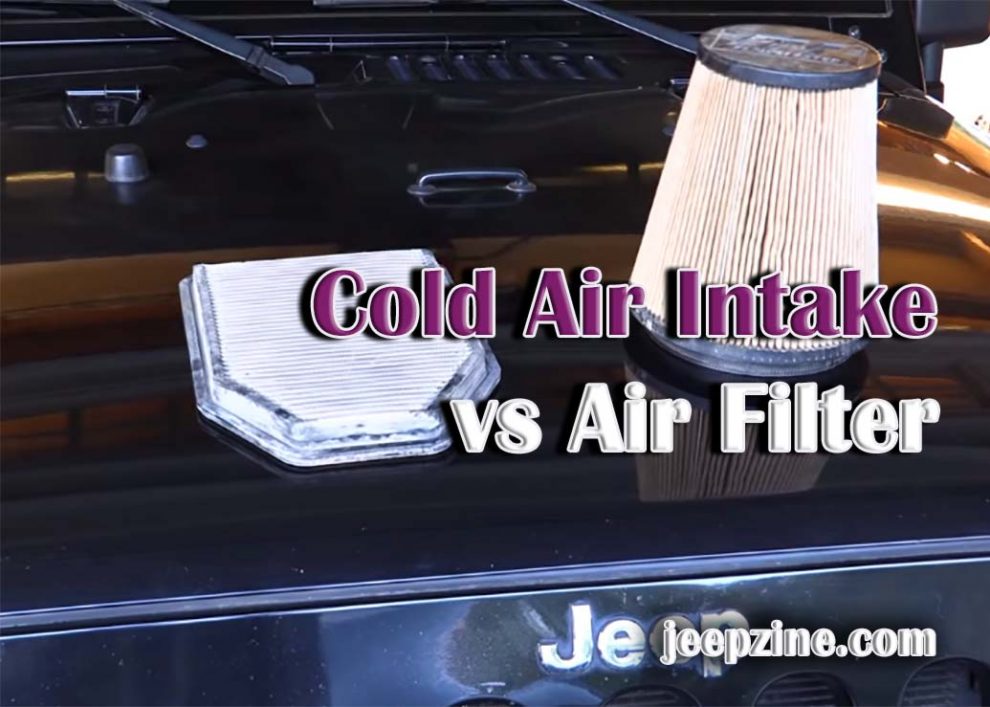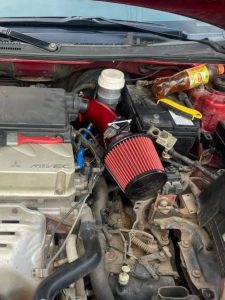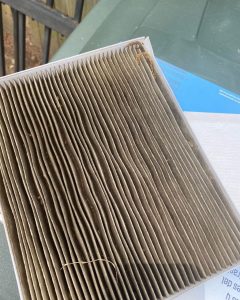When it comes to maintaining your car’s engine, there are several different options available. One of the most popular components that many people consider is a cold air intake (CAI) or an air filter (AF). Both of these components improve the performance of your engine and provide a range of other benefits. However, the differences between them can be confusing for some drivers. In this article, we’ll compare and contrast cold air intakes vs air filters so you can make an informed decision about what’s best for your vehicle.
Understanding the Basics of a Cold Air Intake and an Air Filter
 What is a Cold Air Intake?
What is a Cold Air Intake?
A cold air intake is designed to increase airflow to your engine by sucking in cooler outside air rather than hot and humid engine bay air. It usually consists of tubing, sometimes reinforced with plastic or metal mesh, which runs from the intake on your car’s engine to an external location like outside the front bumper or in front of the fog light area near the front headlight assembly. The additional airflow allows for better combustion, resulting in increased power output and improved fuel economy. Additionally, CAIs often feature cone-shaped or curved filters with larger diameters than traditional air filters, which further improve airflow.
What is an Air Filter?
An air filter is the component responsible for keeping dust and other contaminants out of the engine, preventing them from causing damage. It’s usually made out of paper or foam, although some aftermarket air filters may be constructed from oil-soaked cotton. The filter works by trapping particles in its fibers while allowing clean air to pass through to the engine. Air filters are typically located within the engine bay and replaced periodically according to your vehicle manufacturer’s instructions. Also read how to clean air filter.
Comparing the Benefits of a Cold Air Intake and an Air Filter
 Improved Performance with a Cold AIr Intake
Improved Performance with a Cold AIr Intake
As mentioned above, cold air intakes allow for greater amounts of cool outside air to be drawn into the engine, resulting in improved performance and fuel economy. This is due to the fact that cooler outside air contains more oxygen than hot engine bay air, leading to more efficient combustion within your cylinders. Additionally, some CAIs feature cone-shaped or curved designs that create a venturi effect—further improving airflow—when combined with an appropriately sized intake tube diameter.
Cleaner Engine with an Air Filter
Air filters, on the other hand, are designed to keep dust and other contaminants out of your engine. In addition to preventing damage, this also ensures that your engine runs cleanly and efficiently. The cleaner air entering your cylinders results in improved performance and fuel economy over time, as well as fewer emissions.
| Component | Benefit |
| Cold Air Intake (CAI) | Increased airflow for better combustion; improved performance & fuel economy; venturi effect from cone-shaped/curved design sometimes included |
| Air Filter (AF) | Keeps dust & contaminants out of engine; improved performance & fuel economy; lower emissions produced over time |
Cost Comparison between the Two Options
Cold air intakes (such as Cold Air Intake for GMC Sierra) can be relatively expensive compared to air filters, although prices vary depending on the brand and style of CAI you choose. Generally speaking, aftermarket intake kits range from around $100-$400 or more depending on features like heat shielding or chrome plating. On the other hand, replacement air filters can cost anywhere from a few dollars to $50 or more, depending on the brand and type of filter.
Final Thoughts
Choosing between a cold air intake and an air filter ultimately depends on your individual needs and preferences. If you are looking for improved performance and/or fuel economy, then a cold air intake may be the best option for you, although they can be more expensive than air filters. However, if all you need is to keep dust and other contaminants out of your engine then an air filter might be the right choice for you. Make sure to research both options thoroughly so that you can make an informed decision about which component is best for your car’s engine.


 What is a Cold Air Intake?
What is a Cold Air Intake? Improved Performance with a Cold AIr Intake
Improved Performance with a Cold AIr Intake
Add Comment